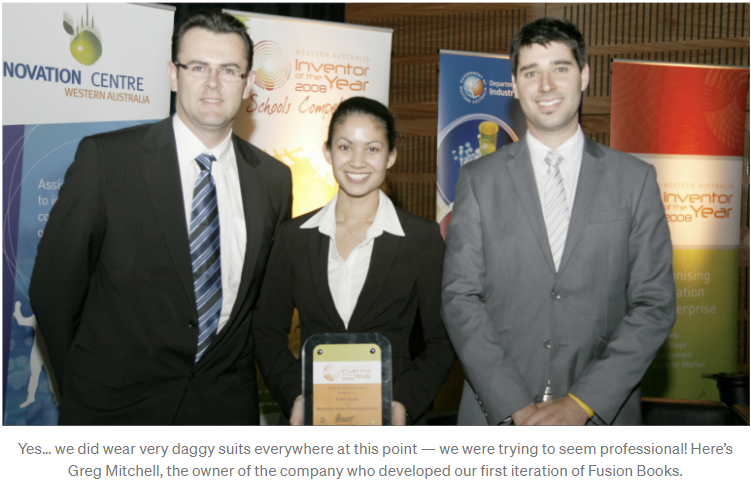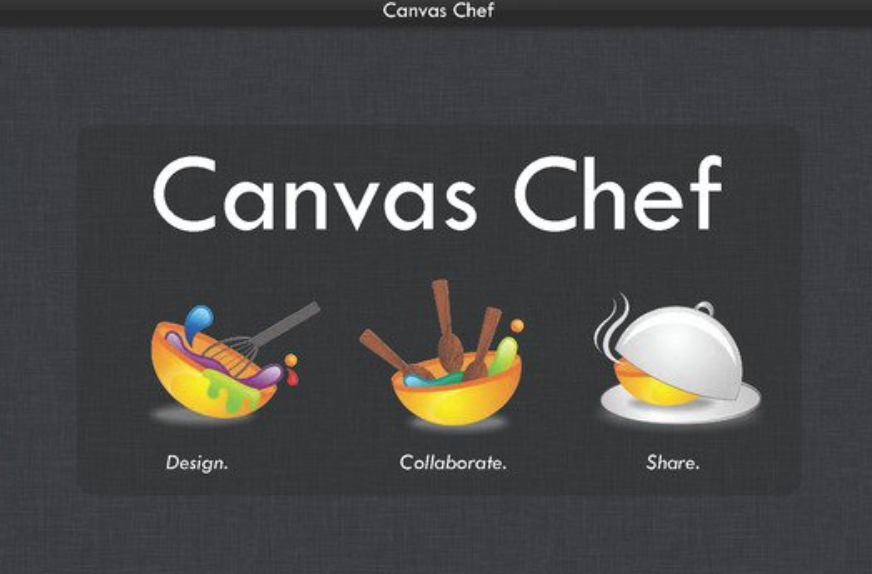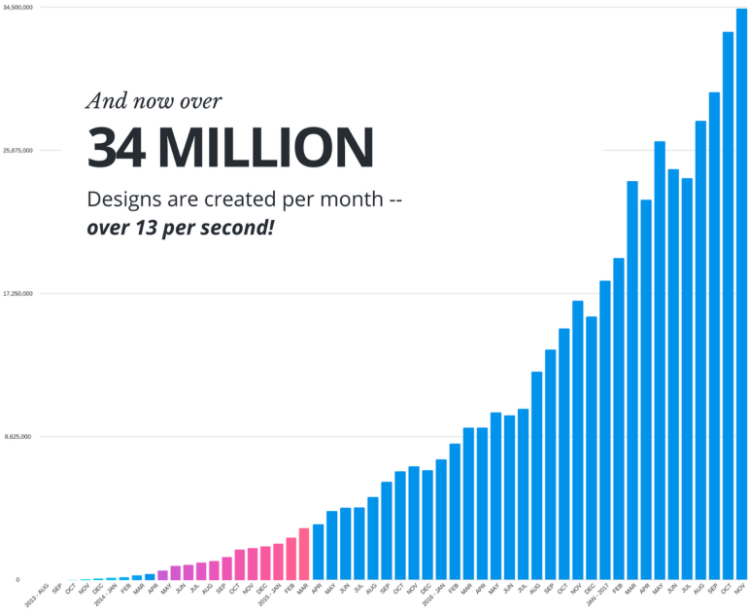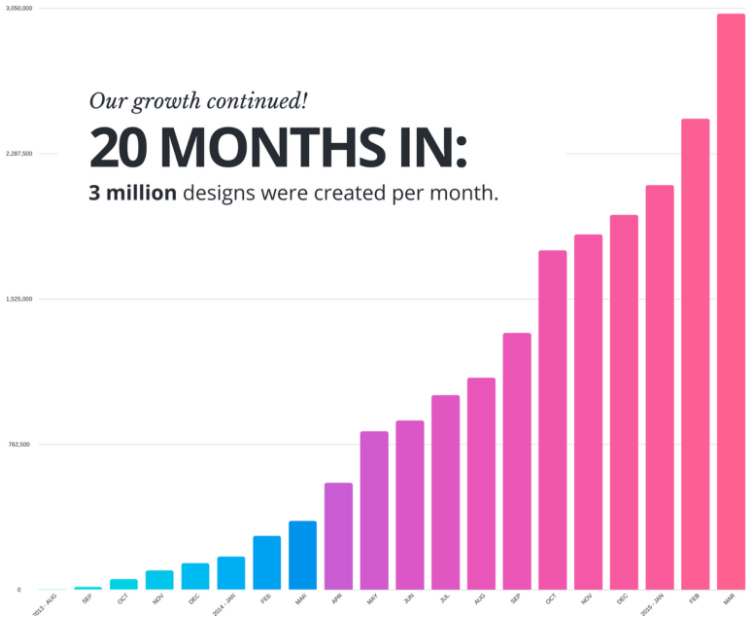
Two Teenagers pitch 100+ VCs with no success.
Instead, they bootstrapped the startup to millions in profits until the VCs came calling.
The crazy part?
Today the company is worth over $15BN and they have full control.
You've used the app, but you don't know the story 👇🏽👇🏽👇🏽
Instead, they bootstrapped the startup to millions in profits until the VCs came calling.
The crazy part?
Today the company is worth over $15BN and they have full control.
You've used the app, but you don't know the story 👇🏽👇🏽👇🏽
1/ At only 19, Melanie Perkins was teaching graphic design as a side job during college.
She was frustrated by how many complex programs you had to use.
She dreamed of simple software to make graphic design easier.
To start, she built it for a use case she knew well: yearbooks
She was frustrated by how many complex programs you had to use.
She dreamed of simple software to make graphic design easier.
To start, she built it for a use case she knew well: yearbooks

2/ She and her boyfriend, Cliff Obrecht, invested everything they saved plus a small loan to build out the software.
The co-founders launched Fusion Books in early 2007 out of her mom's house in Perth.
They kept their jobs and invested heavily into a school expo in Sydney...
The co-founders launched Fusion Books in early 2007 out of her mom's house in Perth.
They kept their jobs and invested heavily into a school expo in Sydney...
3/ They spent $1000s on the tickets and booth, but there were more exhibitors than attendees.
It was a total waste.
They had built a product people enjoyed, but hadn't cracked the code on growing it...
It was a total waste.
They had built a product people enjoyed, but hadn't cracked the code on growing it...
4/ Eventually they picked up the phone and just called the schools direct.
They even offered to send over a few samples. It worked!
Cliff began calling schools every night, while Melanie and her mom kept the printers running 24/7...
They even offered to send over a few samples. It worked!
Cliff began calling schools every night, while Melanie and her mom kept the printers running 24/7...
5/ Soon the company became so successful, Melanie dropped out in her last semester to keep it afloat!
She wanted to scale beyond yearbooks, but had didn't know how.
Fusion Books came in 2nd at the WA Inventor of the Year competition in 2008.
But still needed capital...
She wanted to scale beyond yearbooks, but had didn't know how.
Fusion Books came in 2nd at the WA Inventor of the Year competition in 2008.
But still needed capital...

6/ As runner up, they were invited back the next year for the awards dinner.
Bill Tai, VC superstar and an avid kite surfer, had flown in to speak and grab some air time after.
He was the first investor they'd met. They got his card, and an offer to meet if ever in SF.
Bill Tai, VC superstar and an avid kite surfer, had flown in to speak and grab some air time after.
He was the first investor they'd met. They got his card, and an offer to meet if ever in SF.

7/ Melanie emailed Bill several times asking for a Skype chat, but got no response.
Last ditch, she sent one that said she was coming into town in a few months..
He responded that he could meet!
Panic set in. Melanie booked her flight and started working on a pitch deck...
Last ditch, she sent one that said she was coming into town in a few months..
He responded that he could meet!
Panic set in. Melanie booked her flight and started working on a pitch deck...
8/ Crashing on her brother's couch (he was studying in SF) - Perkins was mortified when she realized how overdressed she as for her meeting with Bill.
It was 2010, and she had brought a printed pitch deck when he expected one via iPhone or tablet.
She had neither.
It was 2010, and she had brought a printed pitch deck when he expected one via iPhone or tablet.
She had neither.

9/ Bill had been on his phone the entire meeting.
Melanie thought he had been bored.
In reality, he was sending intros for her the whole time!
She was on to something, but Bill wouldn't invest without a top notch tech team.
It was a classic Catch-22.
Melanie thought he had been bored.
In reality, he was sending intros for her the whole time!
She was on to something, but Bill wouldn't invest without a top notch tech team.
It was a classic Catch-22.
10/ What was supposed to be 2 weeks on her brother's couch quickly became 3 months.
In 2010, Fusion Books grew to $2MM a year with 50% margins.
Funding was still years away.
In 2010, Fusion Books grew to $2MM a year with 50% margins.
Funding was still years away.
11/ In 2011, Perkins and Obrecht met their tech co-founder in Cameron Adams, a former Google lead designer.
It took another dozen of pitches and over a year before he left his team to join them instead.
It took another dozen of pitches and over a year before he left his team to join them instead.

12/ Tech team secured, Fusion Books pitched 100+ VCs.
Everyone like the idea and team, but turned them down.
They needed a better name. One that featured the market opportunity instead of yearbooks.
Enter - Canvas Chef.
Everyone like the idea and team, but turned them down.
They needed a better name. One that featured the market opportunity instead of yearbooks.
Enter - Canvas Chef.

13/ Everyone hated Canvas Chef as a name, but it took a new team member to recommend Canva - Canvas in French.
The renamed team returned to Bill.
He offered to open their round with $25k.
Melanie wrangled him up to 100k.
The renamed team returned to Bill.
He offered to open their round with $25k.
Melanie wrangled him up to 100k.
14/ Canva raised a total of $3MM for her seed round in 2012.
$1.5MM from investors with a match from the Australian government to keep them from moving stateside.
Now it was time to take on Microsoft, Adobe, Google, and Apple.
$1.5MM from investors with a match from the Australian government to keep them from moving stateside.
Now it was time to take on Microsoft, Adobe, Google, and Apple.

15/ Building in stealth mode, a bad review broke months ahead of their launch schedule.
The follow on reviews were good, but it was clear they needed better onboarding.
By using gamification, they were able to build a workflow that taught and entertained new users.
The follow on reviews were good, but it was clear they needed better onboarding.
By using gamification, they were able to build a workflow that taught and entertained new users.
16/ Canva had reinvented the design landscape with their drag n drop interface as Fusion Books years ago, but it didn't make waves until the general use application years later in 2013
They reached 50,000 users in their first month.
They reached 50,000 users in their first month.
https://twitter.com/kevaldesai/status/389954706811793409?s=20
18/ Their Design School Blog amplified the amazing product growth even further.
Following in the footsteps of fellow Aussie startup titan, Atlassian, Canva built an inbound engine of SEO and content that continues to produce compounding returns.
Following in the footsteps of fellow Aussie startup titan, Atlassian, Canva built an inbound engine of SEO and content that continues to produce compounding returns.

19/ @canva is now worth over $15 BILLION. 5% is employee owned, with the rest held by founders and investors.
Their new goal is to reach 3.2 billion users.
In the process, becoming the #1 design tool for every use.
Their new goal is to reach 3.2 billion users.
In the process, becoming the #1 design tool for every use.
20/ Melanie and Cliff got married in Jan 2021 with a $30 engagement ring. Together, they're worth $6.18B.
The CEO/COO power couple has pledged to donate their entire fortune. Step #2 in a 2 part plan.
The CEO/COO power couple has pledged to donate their entire fortune. Step #2 in a 2 part plan.

21/ If you enjoyed this thread, follow me @JSPujji
I tweet about bootstrapped startup stories like this every week.
Like this epic tale of another female entrepreneur who overturned her industry:
I tweet about bootstrapped startup stories like this every week.
Like this epic tale of another female entrepreneur who overturned her industry:
https://twitter.com/jspujji/status/1389657821004902416?s=20
22/ Sources
cnbc.com/2020/01/09/can…
gritdaily.com/melanie-perkin…
entrepreneur.com/article/310482
alexanderjarvis.com/canva-pitch-de…
canva.com/learn/content-…
blog.appvirality.com/canva-growth-s…
A few written by @melaniecanva herself:
smartcompany.com.au/startupsmart/a…
medium.com/canva/21-quest…
canva.com/design/DACsRAE…
cnbc.com/2020/01/09/can…
gritdaily.com/melanie-perkin…
entrepreneur.com/article/310482
alexanderjarvis.com/canva-pitch-de…
canva.com/learn/content-…
blog.appvirality.com/canva-growth-s…
A few written by @melaniecanva herself:
smartcompany.com.au/startupsmart/a…
medium.com/canva/21-quest…
canva.com/design/DACsRAE…
23/ I love this story because it reminds me:
1. Invest in user education & customer success
2. SEO/Content Works at scale
3. Test -> Learn -> Implement
4. Network & Follow Through
5. Grit Wins
6. You can build a great company anywhere
And that anyone can do it…
1. Invest in user education & customer success
2. SEO/Content Works at scale
3. Test -> Learn -> Implement
4. Network & Follow Through
5. Grit Wins
6. You can build a great company anywhere
And that anyone can do it…
• • •
Missing some Tweet in this thread? You can try to
force a refresh







